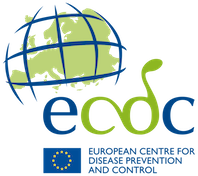Estonia: Recommended vaccinations
| General recommendation | |
| Recommendation for specific groups only | |
| Catch-up (e.g. if previous doses missed) | |
| Vaccination not funded by the National Health system | |
| Mandatory vaccination |
| Birth | Months | Years | |||||||||||||
|---|---|---|---|---|---|---|---|---|---|---|---|---|---|---|---|
| 2 | 3 | 4-5 | 6 | 12 | 2 | 5 | 6-7 | 12 | 13 | 15-16 | 18 | ||||
| Coronavirus disease (COVID-19)1 | COVID-193 | ||||||||||||||
| tuberculosis | BCG4 | ||||||||||||||
| rotavirus infection | ROTA | ROTA | ROTA5 | ||||||||||||
| diphtheria | D | D | D | D | D | d | |||||||||
| tetanus | TT | TT | TT | TT | TT | TT | |||||||||
| pertussis | acP | acP | acP | acP | acP | acp | |||||||||
| poliomyelitis | IPV | IPV | IPV | IPV | IPV | ||||||||||
| Haemophilus influenzae type b infection | Hib | Hib | Hib | Hib | |||||||||||
| hepatitis B | HepB6 | HepB | HepB | HepB | HepB | ||||||||||
| measles | MEAS | MEAS | |||||||||||||
| mumps | MUMPS | MUMPS | |||||||||||||
| rubella | RUBE | RUBE | |||||||||||||
| human papillomavirus infection | HPV9 (F/M)7 | HPV9 (F/M)7 | |||||||||||||
| influenza2 | IIV | ||||||||||||||
Version:
Footnotes:
- see 2023/24 recommendations here: https://vaktsineeri.ee/et/covid-19
- Influenza immunization is recommended for: 1) recipients of continued general care services and special care services provided outside the home, recipients of community living services within the meaning of the Social Welfare Act; 2) for persons aged 60 and older; 3) for children aged 6 months to 7 years; 4) for pregnant women; 5) for minors over 7 years of age who have an increased risk of becoming seriously ill due to their health condition (cardiovascular diseases, oncological diseases, immunodeficiency, diabetes and obstructive lung disease).
- https://www.vaktsineeri.ee/et/covid19
- Administration in the 1-5 days after birth
- 3rd dose only for pentavalent rotavirus vaccines
- Within 12 hours after birth, recommended for babies born from HepB positive mother
- As of February 2023, boys included in the programme - one dose scheme. free catch-up for 15-18-year-olds
More information available at:
https://ta.vaktsineeri.ee/en
--------------------------------------------------------------------------------
ADDITIONAL INFORMATION
1. After bone marrow transplantation, persons with the corresponding indication can also be immunized free of charge with vaccines, included to the national immunisation schedule. Other vaccines are chargeable.
2. When there is a risk of epidemic spread of infectious diseases, individuals of all age groups can be immunized free of charge with vaccines, included to the national immunisation schedule in the amount of up to 500 vaccine doses. Other vaccines are chargeable.
--------------------------------------------------------------------------------
MAJOR HISTORICAL CHANGES
2003: HepB vaccination for newborns was included in the national immunization schedule
2005 Sept. : Hib vaccine was included in the national immunization schedule
2008: Pertussis vaccine: change over from wP to aP in the public sector. Poliomyelitis vaccine: change over from OPV to IPV.
2012 Jan.: dTap included into the national immunisation schedule
2014 July : Rota vaccine is included in the national immunization schedule
2018 Jan
HPV vaccination introduced
Hexavalent vaccination introduced
Measles, mumps and rubella:
1964: Measles vaccination introduced to children aged 1-8 years of age.
1973: Age of measles vaccination lowered to 10 months.
1980: Age of measles vaccination shifted to 15-18 months and second measles vaccine introduced at 6 years of age.
1981: Mumps vaccine introduced to children aged 15-18 months.
1993: Rubella vaccine introduced to children aged 6 years.
1994: MMR replaces measles-only vaccination. Age of MMR vaccination regimen changed and recommended at 12 months (MMR1) and at 12 years (MMR2).
1997: Recommended age of MMR2 changed from 12 years to 13 years.
--------------------------------------------------------------------------------
Date of last update: 30 Jan. 2024
--------------------------------------------------------------------------------
